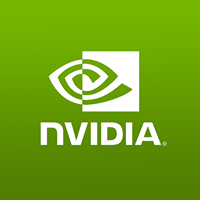Nvidia's Forecast: A Storm on the Horizon
August 29, 2024, 9:34 pm
Nvidia, the titan of chip manufacturing, recently faced a tempest. Its quarterly forecast fell short of the sky-high expectations set by investors. This disappointment sent shockwaves through the tech sector, causing Nvidia's shares to plummet by 6% in after-hours trading. The ripple effect was immediate, dragging down the stocks of other semiconductor companies.
Nvidia's stock had been on a meteoric rise, soaring over 150% this year alone. Investors had been riding the wave, fueled by the promise of generative artificial intelligence (AI). But now, the clouds of uncertainty loom large. The company's forecast was seen as a day of reckoning, a moment when the exuberance of the market met the harsh reality of numbers.
The stakes are high. Nvidia's performance is pivotal. A decline in its stock could mean a loss of $175 billion in market value. This isn't just a number; it's a signal. It suggests that investors are beginning to question the sustainability of the generative AI boom. With major players like Microsoft, Alphabet, Amazon, and Meta Platforms planning to spend over $200 billion on AI infrastructure in 2024, the stakes are even higher.
Nvidia's recent report was a mixed bag. While it showcased impressive growth—revenue from its data center segment surged by 154%—the forecast for the upcoming quarter was less than stellar. Analysts had expected a gross margin of 75.5%, but Nvidia projected a slightly lower figure. This slight dip was enough to send investors into a frenzy. The fear is palpable. If Nvidia falters, what does that mean for the entire tech sector?
The company’s CEO, Jensen Huang, had previously painted a picture of insatiable demand for Nvidia's powerful graphics processors. These chips are the backbone of generative AI technologies, powering everything from chatbots to complex data analysis. Yet, even as demand remains high, the reality of production delays looms. The much-anticipated Blackwell chips, Nvidia's next-generation offering, will not hit the market until the fourth quarter. This delay raises questions about whether the current generation of chips can sustain the momentum.
Investors are jittery. The market had grown accustomed to Nvidia consistently beating expectations. But this time, the bar was set too high. The company’s revenue growth, while still impressive at 122%, was not enough to satisfy the insatiable appetite of Wall Street. Each success raises the stakes, and now, the risk of disappointment looms larger than ever.
The regulatory landscape adds another layer of complexity. Nvidia is under scrutiny from regulators in the U.S. and South Korea regarding its sales practices and partnerships. Allegations of anticompetitive behavior are swirling, with reports suggesting that Nvidia may be bundling its networking equipment with its coveted AI chips. This scrutiny could further complicate Nvidia's path forward, as regulatory challenges often lead to delays and increased costs.
Despite these challenges, Nvidia remains a powerhouse. Its gross margins still outshine those of competitors like AMD, which reported a margin of just 53%. Nvidia's ability to command premium prices for its chips is a testament to its market dominance. However, the question remains: how long can this dominance last in the face of rising competition and regulatory pressures?
The broader implications of Nvidia's forecast extend beyond its own stock. The tech sector has been riding a wave of optimism, driven by the promise of AI. But if Nvidia stumbles, it could trigger a reevaluation of investments across the board. The fear is that other tech giants may reconsider their hefty expenditures on AI infrastructure, leading to a slowdown in the sector.
As the dust settles from Nvidia's latest report, investors are left grappling with uncertainty. The once-clear skies of the AI boom are now clouded with doubt. Nvidia's future performance will be closely watched, not just for its own sake, but for the health of the entire tech industry.
In the world of high-stakes investing, every number tells a story. Nvidia's latest forecast is a cautionary tale, a reminder that even giants can stumble. The road ahead is fraught with challenges, but for now, the market holds its breath, waiting to see if Nvidia can weather the storm.
The tech sector stands at a crossroads. Will it continue to soar, or will it face a reckoning? Only time will tell. For now, Nvidia's forecast serves as a stark reminder of the delicate balance between expectation and reality in the fast-paced world of technology.
Nvidia's stock had been on a meteoric rise, soaring over 150% this year alone. Investors had been riding the wave, fueled by the promise of generative artificial intelligence (AI). But now, the clouds of uncertainty loom large. The company's forecast was seen as a day of reckoning, a moment when the exuberance of the market met the harsh reality of numbers.
The stakes are high. Nvidia's performance is pivotal. A decline in its stock could mean a loss of $175 billion in market value. This isn't just a number; it's a signal. It suggests that investors are beginning to question the sustainability of the generative AI boom. With major players like Microsoft, Alphabet, Amazon, and Meta Platforms planning to spend over $200 billion on AI infrastructure in 2024, the stakes are even higher.
Nvidia's recent report was a mixed bag. While it showcased impressive growth—revenue from its data center segment surged by 154%—the forecast for the upcoming quarter was less than stellar. Analysts had expected a gross margin of 75.5%, but Nvidia projected a slightly lower figure. This slight dip was enough to send investors into a frenzy. The fear is palpable. If Nvidia falters, what does that mean for the entire tech sector?
The company’s CEO, Jensen Huang, had previously painted a picture of insatiable demand for Nvidia's powerful graphics processors. These chips are the backbone of generative AI technologies, powering everything from chatbots to complex data analysis. Yet, even as demand remains high, the reality of production delays looms. The much-anticipated Blackwell chips, Nvidia's next-generation offering, will not hit the market until the fourth quarter. This delay raises questions about whether the current generation of chips can sustain the momentum.
Investors are jittery. The market had grown accustomed to Nvidia consistently beating expectations. But this time, the bar was set too high. The company’s revenue growth, while still impressive at 122%, was not enough to satisfy the insatiable appetite of Wall Street. Each success raises the stakes, and now, the risk of disappointment looms larger than ever.
The regulatory landscape adds another layer of complexity. Nvidia is under scrutiny from regulators in the U.S. and South Korea regarding its sales practices and partnerships. Allegations of anticompetitive behavior are swirling, with reports suggesting that Nvidia may be bundling its networking equipment with its coveted AI chips. This scrutiny could further complicate Nvidia's path forward, as regulatory challenges often lead to delays and increased costs.
Despite these challenges, Nvidia remains a powerhouse. Its gross margins still outshine those of competitors like AMD, which reported a margin of just 53%. Nvidia's ability to command premium prices for its chips is a testament to its market dominance. However, the question remains: how long can this dominance last in the face of rising competition and regulatory pressures?
The broader implications of Nvidia's forecast extend beyond its own stock. The tech sector has been riding a wave of optimism, driven by the promise of AI. But if Nvidia stumbles, it could trigger a reevaluation of investments across the board. The fear is that other tech giants may reconsider their hefty expenditures on AI infrastructure, leading to a slowdown in the sector.
As the dust settles from Nvidia's latest report, investors are left grappling with uncertainty. The once-clear skies of the AI boom are now clouded with doubt. Nvidia's future performance will be closely watched, not just for its own sake, but for the health of the entire tech industry.
In the world of high-stakes investing, every number tells a story. Nvidia's latest forecast is a cautionary tale, a reminder that even giants can stumble. The road ahead is fraught with challenges, but for now, the market holds its breath, waiting to see if Nvidia can weather the storm.
The tech sector stands at a crossroads. Will it continue to soar, or will it face a reckoning? Only time will tell. For now, Nvidia's forecast serves as a stark reminder of the delicate balance between expectation and reality in the fast-paced world of technology.



